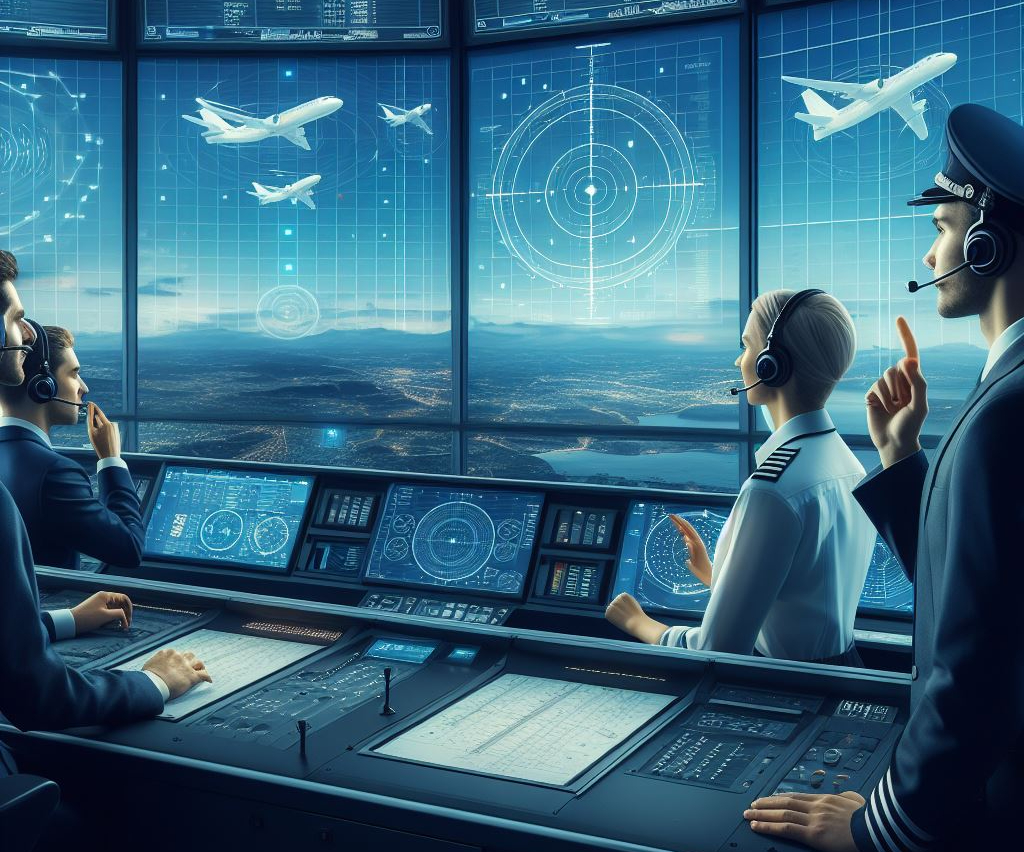Aircraft Communication Systems are critical for ensuring safe and efficient operations by enabling seamless communication between pilots, air traffic control (ATC), ground operations, and passengers. These systems encompass various technologies, including VHF/UHF radio communications, satellite communications (SATCOM), data link communications, and onboard communication networks. The global aircraft communication system market is experiencing robust growth driven by advancements in communication technologies, increasing air traffic, and the need for real-time data exchange and improved passenger connectivity.
Industry Trends
-
Advancements in Communication Technologies:
- Next-Generation Data Links: Technologies such as Controller-Pilot Data Link Communications (CPDLC) are being widely adopted to enhance communication efficiency and reduce voice communication congestion.
- High-Speed In-Flight Connectivity: The demand for high-speed internet access onboard aircraft is driving investments in advanced SATCOM and broadband communication systems, providing passengers with a seamless internet experience.
-
Integration of Internet of Things (IoT):
- Smart Aircraft: IoT integration in aircraft communication systems enables real-time monitoring and diagnostics of aircraft systems, predictive maintenance, and efficient fleet management.
- Connected Ecosystems: Aircraft are becoming part of a broader connected ecosystem, communicating with other aircraft, ground stations, and maintenance hubs to enhance operational efficiency and safety.
-
Enhanced Security and Cyber Protection:
- Cybersecurity Measures: With increasing connectivity, the need for robust cybersecurity measures is paramount to protect communication systems from cyber threats and ensure the integrity of data.
- Encrypted Communications: Implementation of advanced encryption technologies to secure data and voice communications, especially in military and defense applications.
-
Adoption of Satellite-Based Communication:
- Global Coverage: SATCOM systems provide global coverage, ensuring reliable communication in remote and oceanic regions where terrestrial communication infrastructure is limited.
- Next-Generation Satellites: Deployment of high-throughput satellites (HTS) and low Earth orbit (LEO) satellite constellations is enhancing bandwidth and reducing latency, improving overall communication capabilities.
Download PDF Brochure: https://www.marketsandmarkets.com/pdfdownloadNew.asp?id=

Opportunities
-
Growing Commercial Aviation Sector:
- Expanding Fleets: Increasing global air travel demand, particularly in emerging markets, is driving the expansion of airline fleets, subsequently boosting the demand for advanced communication systems.
- Fleet Modernization: Airlines are modernizing their fleets with state-of-the-art communication systems to improve operational efficiency, safety, and passenger experience.
-
Military and Defense Applications:
- Advanced Communication Solutions: Military forces require sophisticated communication systems for secure, reliable, and real-time information exchange, creating opportunities for advanced system development.
- Unmanned Aerial Vehicles (UAVs): The growing use of UAVs in defense and surveillance operations drives demand for robust communication systems to ensure seamless control and data transmission.
-
Urban Air Mobility (UAM):
- Emerging Market: The rise of UAM and electric vertical takeoff and landing (eVTOL) aircraft presents new opportunities for communication system manufacturers to develop specialized solutions for these innovative platforms.
- Integration with Air Traffic Management (ATM): Developing communication systems that integrate seamlessly with urban air traffic management systems to ensure safe and efficient UAM operations.
Market Dynamics
- Drivers:
- Technological Advancements: Continuous innovations in communication technologies enhance the capabilities and reliability of aircraft communication systems, driving market growth.
- Regulatory Compliance: Stringent safety regulations and standards necessitate the adoption of advanced communication systems to ensure compliance and operational safety.
- Increasing Air Traffic: The rise in global air traffic, particularly in emerging markets, boosts the demand for new aircraft and advanced communication systems.
- Challenges:
- High Development Costs: The research, development, and certification of advanced communication systems require significant investment, presenting a barrier for new entrants.
- Technical Complexity: Developing and maintaining sophisticated communication systems necessitates advanced technical expertise and can be challenging to implement and integrate.
- Security Concerns: Ensuring the cybersecurity of communication systems is crucial, particularly with increasing connectivity and data exchange.
Partnerships and Collaborations
- Industry-Academic Collaborations:
- Partnerships with universities and research institutions can drive innovation in communication technology, leveraging academic expertise and research capabilities.
- Government and Industry Partnerships:
- Collaborations between government agencies and private companies can facilitate the development and implementation of advanced communication systems, particularly for defense and public safety applications.
- Cross-Industry Alliances:
- Alliances between aerospace companies and communication system manufacturers can lead to the development of customized solutions that address specific industry needs and enhance overall system performance.
Ask for Sample Report: https://www.marketsandmarkets.com/requestsampleNew.asp?id=108393837
Key Companies
- Collins Aerospace (Raytheon Technologies):
- A leading provider of aerospace and defense communication systems, Collins Aerospace offers a comprehensive range of solutions, including SATCOM, data links, and cockpit communication systems.
- Honeywell International Inc.:
- Honeywell provides advanced communication systems for various aircraft applications, focusing on improving safety, efficiency, and passenger connectivity through innovative technologies.
- Thales Group:
- Thales specializes in avionics and communication systems for commercial, military, and space applications, emphasizing secure and reliable communication solutions.
- General Electric (GE) Aviation:
- GE Aviation supplies advanced avionics and communication systems, leveraging its expertise in engine and systems technologies to provide integrated solutions for modern aircraft.
- Iridium Communications Inc.:
- Iridium is known for its global satellite communication network, offering reliable and real-time communication solutions for aviation, particularly in remote and oceanic regions.
- L3Harris Technologies:
- L3Harris provides a wide range of communication systems for military and commercial aviation, focusing on secure, resilient, and high-performance communication solutions.
The global aircraft communication system market is poised for significant growth, driven by technological advancements, increasing air traffic, and the need for real-time data exchange and improved passenger connectivity. Key players are focusing on innovation, strategic partnerships, and addressing market challenges to capitalize on emerging opportunities. As the aviation industry continues to evolve, advanced communication systems will play a crucial role in ensuring the safety, efficiency, and reliability of air travel, emphasizing secure, efficient, and seamless connectivity.
